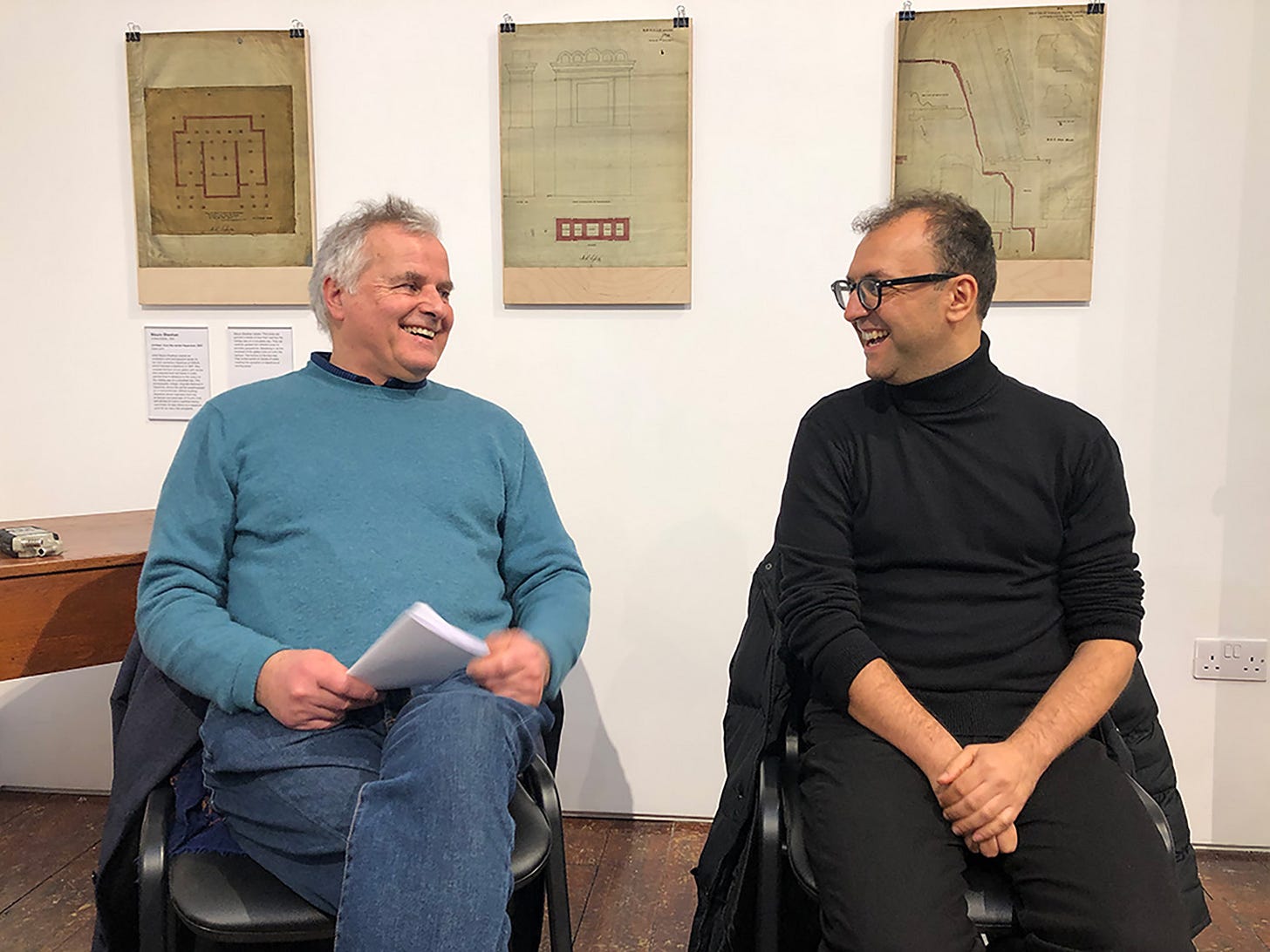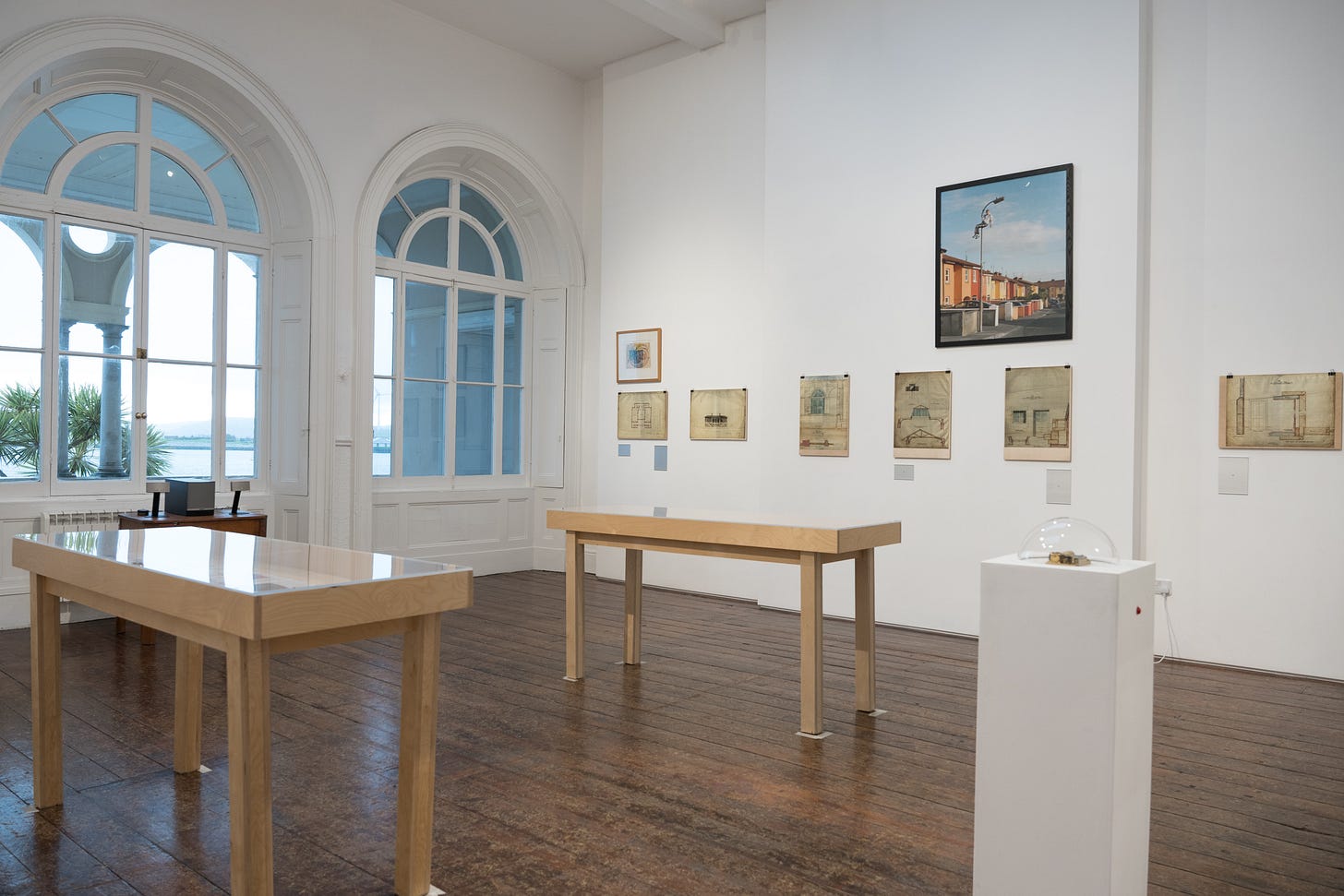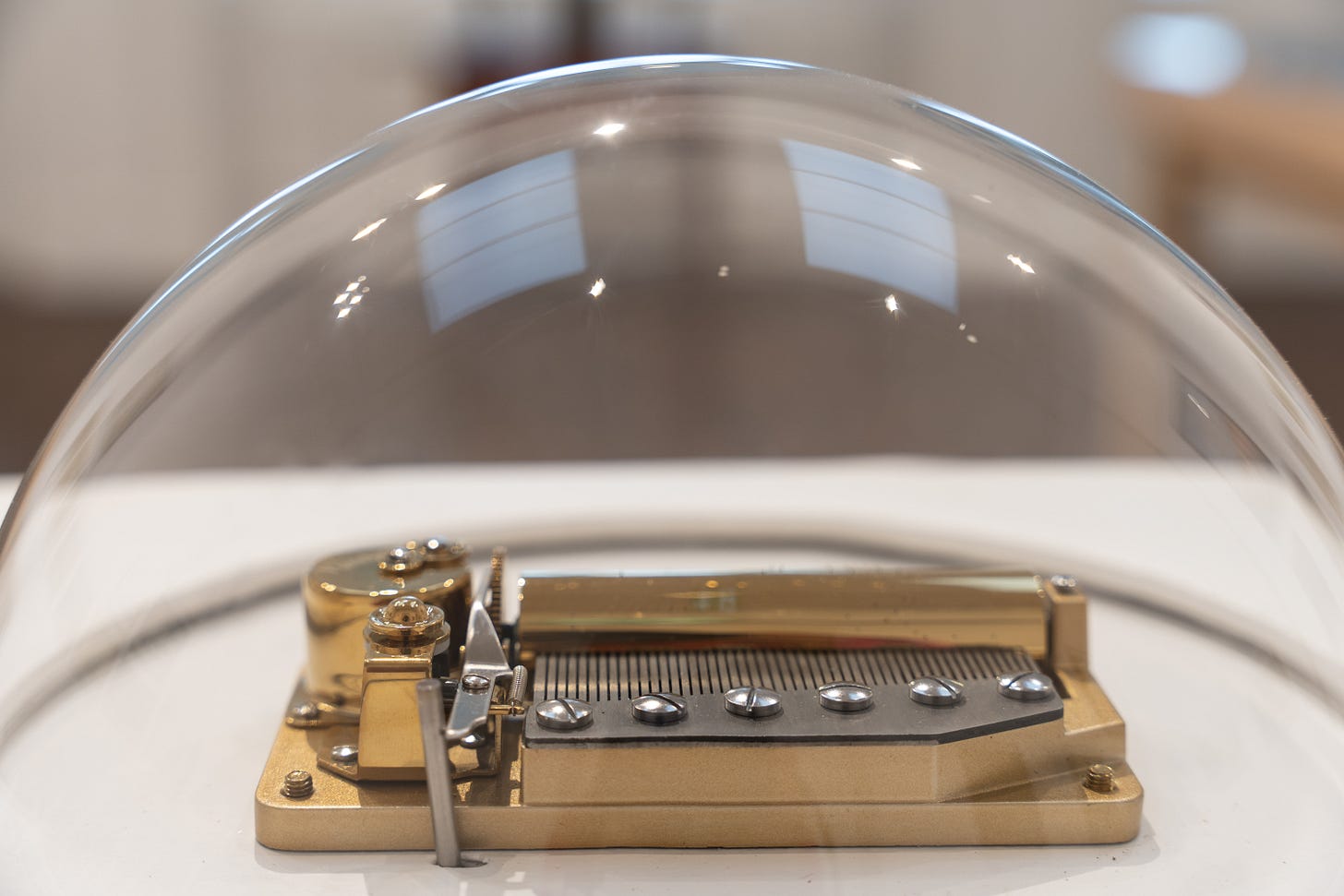Local colour - and hidden treasures - at Sirius Arts Centre
A new exhibition based on what artists leave behind yields both mystery and treasures in Cobh.

One day in the early 2000s, a man walked into Peter Murray’s office and deposited a book of drawings on his desk.
Murray can’t be any more clear than that, because he can’t remember who the man was, or any other details about the incident that led to him being in possession of a set of historically significant architectural drawings dating to the 1850s.
“He just said I should have them,” Murray says. “I can’t for the life of me remember who it was.”
Murray, who was curator and then director at the Crawford Art Gallery for 30 years, was also the driving force behind an ongoing conservation and arts project in Cobh: in the eighties, he had been hellbent on saving one of the harbour town’s landmark buildings, which was falling into ruin.
The graceful building that looks out over the water on what was once known as Columbine Quay is now home to Sirius Arts Centre, but it was once the Royal Cork Yacht Club, the oldest yacht club in the world. The fascinating history of the building dates to a pavilion that was built on the site, owned by the Smith Barrys of Fota House, for the 1849 visit of Queen Victoria to Cobh, which famously involved changing the name of the town to Queenstown.
The original design of the building was by 19th century English architect Anthony Salvin, best known for his medieval revivalism, his Tudor piles and his restoration work at Windsor Castle. And it was the original folio of these drawings, done some time between 1852 and 1854, that an unknown man deposited on Peter Murray’s desk.
By the time Murray was spotting a For Sale sign on the building in the eighties, it had fallen from grace and into dereliction. It was owned by UCC, who had hoped to base a maritime research facility there, but it was in a sorry state.
“The windows were broken, rain was getting in through the roof,” Murray recalls. “I felt bad about proceeding with the renovation because we did deprive the local youth of an informal nightclub: they would come in and they had started lighting fires in the corner. I felt it was a matter of months before it would be set on fire accidentally.”
Some years, many favours, some investors, and a European architectural heritage award later, and the Sirius Project got underway, restoring the building to its former glory and converting it into an exhibition space but, perhaps more significantly, an apartment for artists’ residencies.
Named for the transatlantic steamship Sirius, the arts centre was to consider, in part, Cobh’s history of emigration, migration and Irish connections abroad, something the programming of the exhibition space attempts to reflect to this day.
Two early residencies that were huge international coups for the fledgling arts centre were those of James Turrell, the artist behind Liss Árd’s Sky Garden, and then Brian O’Doherty, who certainly made his mark on the building with his famed One Here Now mural, which was restored and temporarily uncovered in 2018.
“The mural was Brian’s vision: like a train coming down the track, the best thing was to stand back and let it happen,” Murray says.
O’Doherty, himself an Irish emigré and keenly aware of Cobh’s politically and emotionally laden history, created One Here Now in 1996 as a sort of wizardry, a luridly coloured, ogham-based attempt at releasing the building from its colonial past.
“The building had this complex history as the home of the Royal Cork Yacht Club,” Murray says. “It was the preserve of a very few elite, wealthy people and it represented a part of Cork’s history that was entertaining, except for when you get into the nineteenth century and the famine, you have this unpalatable prospect of such a building as this being constructed just a handful of years after the harbour had witnessed so many people emigrating.”
Murray is revisiting the Sirius Centre’s history for good reason: a new exhibition, Local Colour for Sirius, is comprised of the Anthony Salvin drawings and a host of other interesting artworks and artefacts left behind by artists in residence down through the years.

A conservation project
When current Sirius director Miguel Amado took up his post in late 2019, he found an array of items and artworks in the building: stashed in the artists apartment, propped up against walls in the office, in the staff room.
The book of Anthony Salvin drawings for the building was one such find, but so was an original Brian O’Doherty sketch for One Here Now, framed and signed and with the inscription To Mary on it: O’Doherty had gifted it to a staff member at Sirius.
Amado and his then assistant curator Brian Mac Domhnaill realised they had a conservation project on their hands, and an important one. They started with the Anthony Salvin drawings, working with historian Tom Spalding to verify their provenance, restoring them and, because the Sirius has no capacity for storing conserved artworks, handing them over to the city archives.
“We felt it was an issue to treat them and conserve them for future generations,” Amado says. “All that process was done, and now those drawings live within Cork city and county archives. But we managed to document and scan them during the process.”
“We also came across some artwork in the office, that some artists have left. Since the beginning, the Sirius has facilitated residencies for artists from different parts of the world, and some left art work behind. Artists have busy lives: they move on, and sometimes they leave things behind.”
The current exhibition, Local Colour for Sirius, was born.
Local colour, or art?
The enigma that named the exhibition is a small series of blocks of colour on watercolour paper, reminiscent of a colour test card. Underneath, in pencil, it says Local Colour for Sirius. It is not signed or dated, and nobody knows who made it, what it is, or even, Amado says, whether or not it is a work of art.
“We don’t know who did it or what purpose it has,” Amado says. “It certainly refers to the building, and it may be to do with the colours the building has had in the past and may be connected to the renovation.”
But Local Colour for Sirius deliberately displays artworks alongside functional artefacts like the Salvin drawings.
“Some of the objects or drawings or other materials, it might not be so clear what they are, even whether they are works of art or part of documentation,” Amado says. “That is also part of the nature of contemporary art practice today: blurring all these boundaries. Is this art, is this documentation, what does it mean, does it have a function?”
“We could have done an architectural exhibition, but that was not the point. What we want is for people to look at them as drawings, to avoid that divide between technique and function and visual pleasure or visual narrative.”
Other pieces in the exhibition most certainly are artworks: All Things Are Not Quiet Silent (2018–21) is a music box by sound art duo Softday. It’s activated by the viewer pressing a button, and the eerie music it plays is transposed elements of water pollution data collected at points around Cobh and the inner harbour.
“We have been commissioning artists to make work that responds to the location, the building and its history, to the geography, to the social history of Cobh or Co Cork in general,” Amado says.
“Sirius has accumulated artworks that could be considered a collection and we think it’s an honour and a privilege to have access to this work, but also a responsibility to make it accessible to the public.”
In the exhibition there is photograph called Jordan Up The Pole by US photographer Doug Dubois: Dubois spent a 2009 Sirius residency photographing young people at a housing estate nearby and it blossomed into a five-year project, with Dubois returning each summer until 2014 and ultimately producing a book, My Last Day at Seventeen.
He held his first exhibition of the work in Sirius. “Somehow, around 25 photographs were left,” Amado says. “With photography, you never know if something is an exhibition print, which have no value and which are supposed to be destroyed after the exhibition, or if they are what we call vintage, and of value. We have been engaging with Doug to try to establish this.”
In exhibiting these treasures and mysteries, Sirius is admitting that it will probably have to let go of them: the arts centre has no formal remit for acquiring a collection, and has no facilities for the preservation of artworks.
Amado hopes that other arts organisations will be interested in taking the works on permanent loan: “From a physical viewpoint, we don’t have the right conditions to keep these artworks here,” he says.
One such artwork, not on display in the current exhibition but soon to be included in another, is the Brian O’Doherty sketch for One Here Now. O’Doherty died last year at the age of 94, and Amado hopes that it will form a valuable part of the artist’s legacy.
Local Colour for SIRIUS: Selected Works from the Archives and Collection runs until February 25. For opening times and more info see here.





